With 2018 drawing to a close, I thought I’d pull together a quick post wrapping up the most important things that happened during the year.
Thank you to everyone who has visited the blog and supported us in making Auckland greater. Throughout the year we published over 430 posts and had over 27,000 comments. Importantly, our advocacy over the last few years appears to be bearing fruit and many of the things we have advocated for have come true, or at least moved closer to happening.
Transport Policies
The new government have stamped their mark on transport planning for Auckland and the country.
In April we got a revision of the Auckland Transport Alignment Project (ATAP). The new version proposes spending $28 billion over the coming decade and most importantly, the government and council have funded it, something missing from previous versions.
The new version includes around $17 billion of capital expenditure and almost two thirds is dedicated to public transport, walking/cycling and safety. This includes $8.4 billion towards rapid transit projects, for which the plan has been improved over previous versions. and now looks very similar to our Congestion Free Network.
One major positive we also saw from ATAP was the removal of the East-West Link in it’s near motorway form with the NZTA sent back to the drawing board to look for a better option.
To help pay for the projects, the council implemented a 10c per litre regional fuel tax from July. The extra tax was also critical in that it unlocked billions more funding from the government. This, combined with a general increase in fuel taxes and rising importer costs generated a bit of noise a few months ago when prices spiked but that subsequently disappeared after prices fell again.
ATAP also helped feed into a new Government Policy Statement (GPS). The new GPS was a vast improvement on the draft produced by the previous government and included significant changes, including a much-needed focus on improving road safety and public transport. This was able to be achieved by keeping state highway spending about the same instead of the continual increases that were planned to fund the previous government’s mega roading projects.
Despite most of these major policy changes being well signalled, it seemed some at Auckland Transport didn’t get the message though and they published a draft Regional Land Transport Plan that proposed to do the opposite. AT ended up having to go back to the drawing board to come up with a more appropriate plan.
Near the end of the year we also saw the draft Regional Public Transport Plan which looks specifically at how public transport services will be improved over the coming decade.
Auckland’s plans are now in a fairly good shape and we have funding to implement them, the challenge now is how quickly and successfully we can do that.
New Network roll-out and PT use
This year saw the final major pieces of the new bus network roll out with the Central and North Shore networks being implemented in July and at the end of September respectively. For most people these changes have significantly improved buses, especially with having a number of services running frequently throughout the day, every day of the week.
Changing all bus routes in the region, along with all the contracts behind the scenes and operators introducing hundreds of new buses is no small task and the complexity of it was more recently highlighted by the struggles Wellington has had in attempting something similar.
In Manukau the new bus interchange opened.
In Auckland at least, the results have at least been positive and usage has continued to rise with annual usage nearly at 96 million trips as of the end of November, up from 91 million at the beginning of the year. Most of that growth has been on buses as trains and ferries were both fairly flat this year. We’re likely to pass 100 million trips in 2019 which will be the first time that’s happened since 1951.
City Rail Link
Progress on the CRL has been mixed this year. There has been a lot of progress on the current works culminating in the first breakthrough earlier this month. A personal highlight was getting a tour of some of the works in the middle of the year.
Also firmly in the good news column has was the council voting to future proof the CRL by allowing for longer stations, long enough for 9-car trains, and by adding a second entrance to the Karangahape Rd station with a much needed exit to Beresford Square. These two changes will increase the overall cost of the project but are something that would not be feasible to do at a later stage. The impact they have are significant though and having longer trains will allow for a 50% increase in capacity on the rail network, with up to 54,000 people an hour able to be delivered to the central city.
We also saw some new videos giving us a better look at what the new stations will look like once complete in 2024.
https://youtu.be/KXqko7pcVXM
The good news was slightly soured earlier in the year after Fletcher’s pulled out of the tendering process for the main works – that will build the stations and tunnels between Wyndham St and Mt Eden. This delayed the tender process for months and the final result of who will build them will be announced in April. More recently there have been problems with the contractor selected to install the rails and other systems in the tunnels. This was resolved just before Christmas with an announcement the tunnel builders will also do that work.
Light Rail
Light rail has continued to be a hot topic for debate, especially after the government confirmed their plans to build it. Unfortunately, much of the debate in the mainstream can be best characterised as ‘fact free’ with opponents of the project spreading often deliberately incorrect information in a bid to stop or delay it.
This hasn’t been helped by the NZTA, who took over the project and started a procurement process in May but who have been frustratingly silent on the work they’ve undertaken so far.
Airport to Botany
While Light Rail will eventually reach the airport, progress was also made in 2018 on providing a rapid transit connection from the east, which when combined with the existing heavy rail network, will provide fast and easy access from the city and elsewhere via a single and simple transfer This will also be part of a busway that eventually connects through to Botany. We got a glimpse of what one of the first and most visible stages of this could look like in November with some concept images of an upgraded Puhinui station to be open in 2021 – a future stage will see a busway bridge span the rail corridor.
AMETI
What is possibly Auckland’s longest running transport project finally moved a step closer this year with consent granted and initial preparation work starting to build an urban busway from Panmure to Pakuranga. Construction will start early next year.
Bus/Bike lash on the rise
One disappointing trend in 2018 was a rise in noise around improvements for buses and bikes, often by a few very vocal opponents and media commentators. Most worryingly this seems to have spooked some at Auckland Transport and it has clearly impacted on their delivery of these projects this year.
This was highlighted at the beginning of the month with the opening of the fantastic Ian McKinnon Cycleway, which at 800m is the longest opened this year.
Also in the good news column is that despite the negativity from some, usage of cycleways continues to grow strongly with routes like the Northwestern cycleway seeing very strong and continued growth every year.
Skypath Confirmed
One great piece of cycling news was the announcement the government had taken over Skypath and confirmed funding to build it. We look forward to hearing more about it in 2019.
Road Safety Focus increasing
With a new government has come an increased focus on improving road safety following the significant increase in deaths and serious injuries on our roads over the last 4-5 years, reversing a previous downward trend. Throughout the year this change in focus has become clear throughout many of our transport agencies which is good to see.
In the case of Auckland Transport, some of this change has also come following a damning report on their role in improving safety. While they still have a long way to go, they are moving in the right direction.
The government have kicked off a massive road safety programme that for the price of a single motorway project will see 870km of state highway made safer by 2021 and more money is being made available for local councils to improve their roads.
Lime Launched
Perhaps the biggest change this year is also one of the smallest, from a vehicle perspective. Lime e-scooters launched in Auckland and Christchurch in mid-October and have been the subject of significant debate but also significant usage. In Auckland alone they say over 100,000 people have already used them and many of the trips are replacing car trips.
City Centre Changes coming
In November we learned of a bold new plan for traffic in the city centre that would make the area far more pedestrian friendly. This is something was unanimously approved by the council to be included in a refresh of the City Centre Masterplan. Even more positive, the councillors were eager for some of the improvements to be trialled as soon as possible rather than waiting years for expensive physical works. We look forward to seeing what 2019 brings in this space.
The city centre remains one of Auckland’s biggest construction sites with many cranes dotted around the skyline with works in all corners as it transforms before our eyes. That is something that will only continue in 2019 with projects like all the downtown works kicking off.
There are plenty more that could be included in here so let me know in the comments if there’s anything major I’ve missed.
Thanks for reading, commenting and sharing our work. Happy New Year
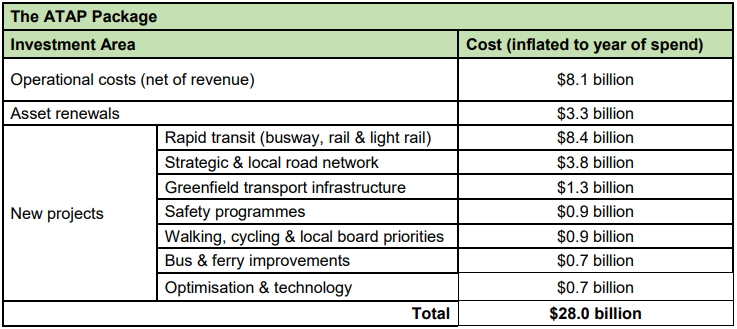
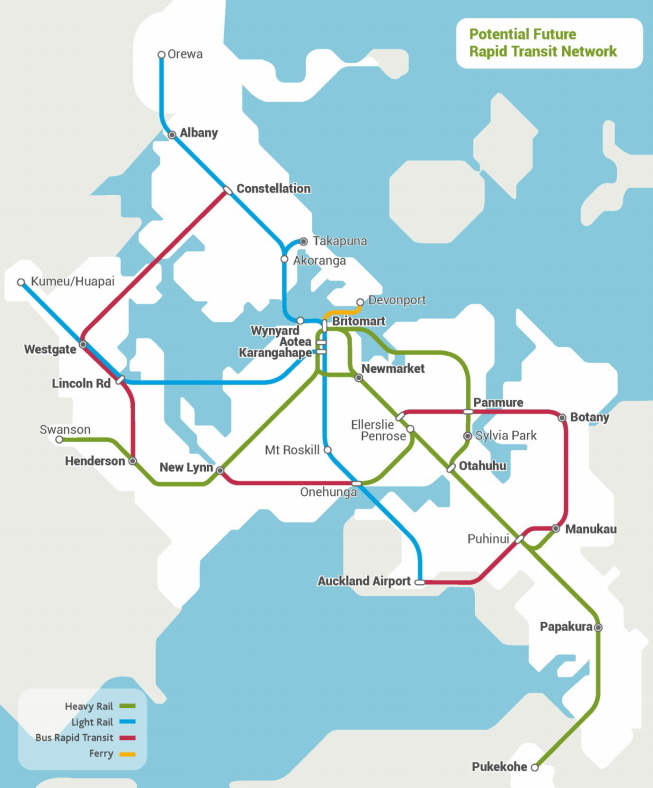
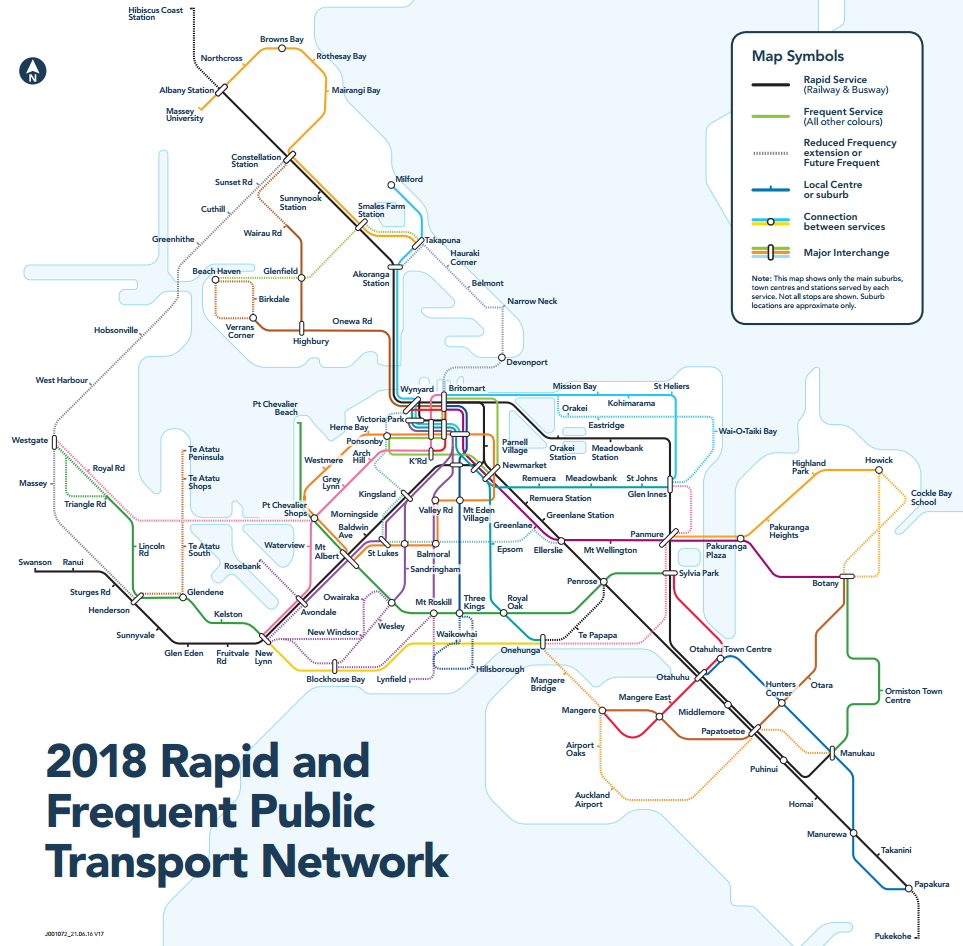
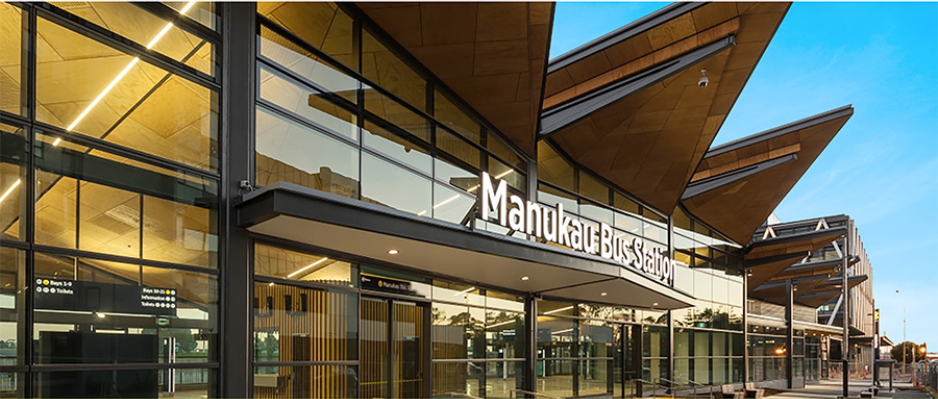
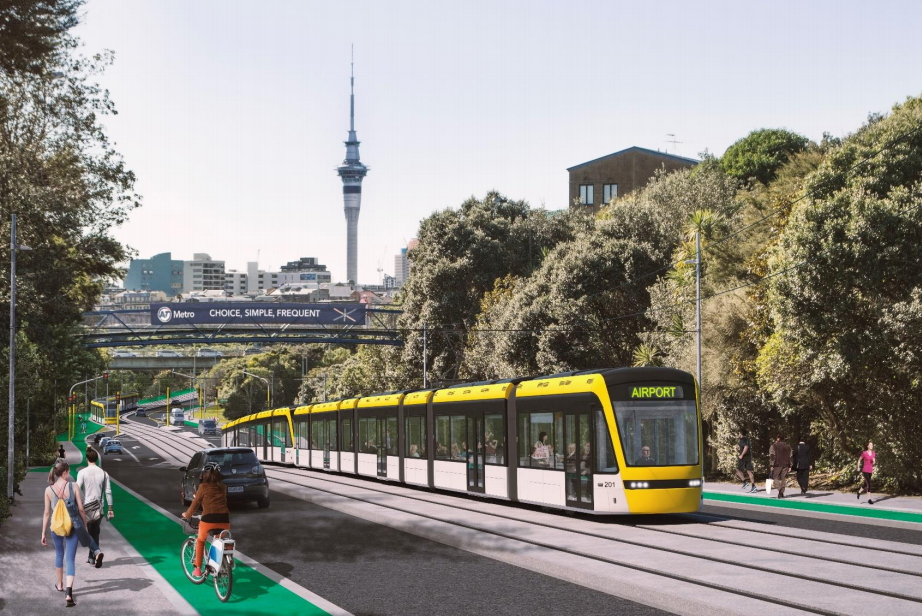




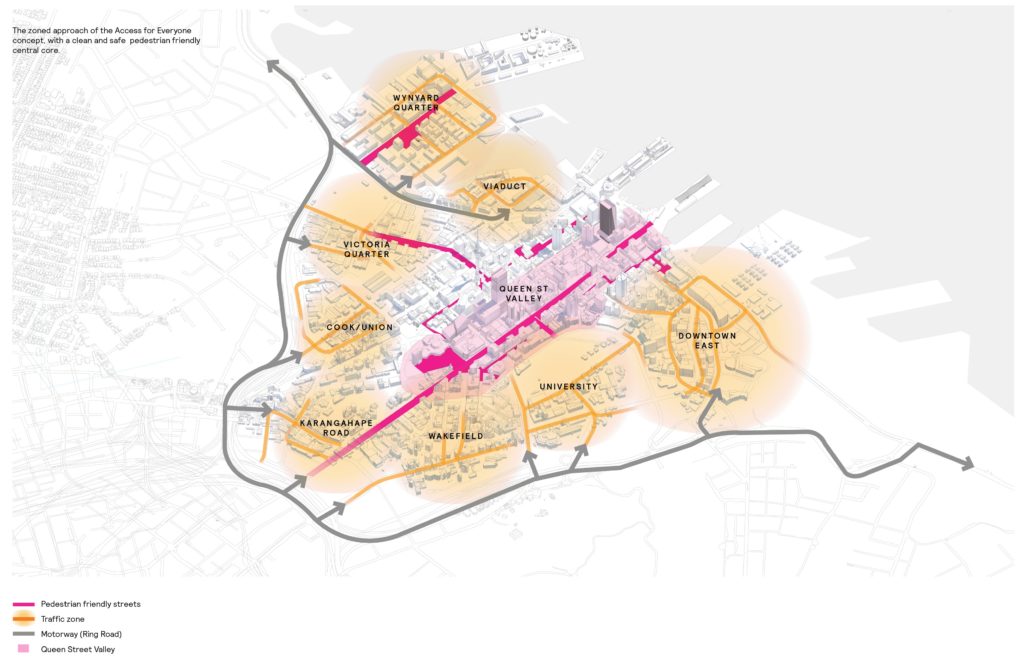


 Processing...
Processing...
“This was highlighted at the beginning of the month with the opening of the fantastic Ian McKinnon Cycleway, which at 800m is the longest opened this year”
Quay Street extension opened over winter is longer I think, it’s 1km
Maybe not technically open yet at the northern end, but you can cycle on the brand new Tamaki River green way which is more than 3 km long.
Too bad the more strategically valuable GI-Tamaki Shared Path is still languishing, not even half built.. was meant to be completed back in 2017 IIRC.
The new Tamaki river path is nice, I rode a few of the sections at the start of the month, be nice when it’s finished, but it’s recreational doesn’t really go to or from anywhere or fit into the network.
The GI to Tamaki path has been a clusterf*ck of a project from start to finish. Every cycle project AT touch goes to crap. You can safely add 2 to 3 years to any estimate they give.
Great summary. Note AT’s map of rapid and frequent network is incorrect: Auckland’s rail lines don’t deliver the necessary 15min all-day frequency to qualify as rapid.
Yes, something I wrote about here
https://www.greaterauckland.org.nz/2018/03/29/network-not-frequent-2/
I wish somebody here would do a table of “facts” and “fact free” opinion to refute what you believe is incorrect.
Why don’t you?
Look, I know it can involve some amount of work but tomorrow’s a public holiday. And the day after.
1. I don’t have the time – family and all that. You know – the most important thing even over PT
2. The information has already been gathered by the owners of this blog
Was the waterview shared path opened this year too? So many cycleways I cant wait to try next time im in Auck.
Waterview Shared Path was opened late 2017. We were supposed to have the next section (Avondale -> New Lynn) completed during 2018 however it got massively pushed back when the plans got upgraded and the estimated cost increased (so we have to wait a lot longer for it).
A big kudos to AT. I’ve complained several times here on GA about slow NX2 and other North Shore bound buses along Halsey Street and its left turn into Fanshawe Street. Well, in the last week or two, the left lane on Halsey has been made a bus lane. Was probably already scheduled, so I get no credit for complaining, but AT certainly deserves the credit.
I think there might have been phasing improvements for the left turn into Fanshawe as well, but it won’t be until peak hour traffic returns after the holidays that any improvement there will be apparent.
What a load of rubbish, the left lane has been a bus lane for many weeks at least. There is also little evidence that the phasing on the left turn into Fanshawe has been changed and my record is sitting in a bus for five light change phases during December. I complained to AT and the two local councilors.
The bus lane is often clogged with cars. The most I have counted is fifteen and on the day I took photos I counted four.
What makes this a real disgrace is that it is on AT’s doorstep. If they can’t fix a problem here where can they fix one?
Why can’t bus operators put dash cam on their buses and snap offending motorists in the bus lanes. Part of the fines collected should go to the hard working bus drivers who have to put up with this blatant offending.
No, the Bus Lane signs were painted only a week or two ago. I saw the roadworks being done. The light phasing for the left turn from Halsey into Fanshawe has been diabolical for some time, and I have also sat through up to 5 light changes. An exit by cars out of Victoria Park onto Halsey just before the lights should be blocked off. I’ve seen plenty of buses held up by right turners and missing the lights as a result.
There was a proposed bus lane being considered, here: https://at.govt.nz/media/1977743/nop1819-001-halsey-street-auckland-central-lane-arrangements.pdf
The issues that were raised (that ultimately delayed it, sorry) were that it adds significant issues for cyclists entering Wynyard quarter (a supposedly active-mode-friendly area).
It also really doing nothing to rebalance the road layout in line with the future bus boulevard and linking wynyard quarter to the rest of the city for transit and active modes, but AT don’t seem to care too much about that.
I’m hoping with the Wellesley street bus boulevard plans coming to light in the next few months we will see some better (planned) action here.
The year in review would not be complete without some comments on AT’s organisation around the last major event – the fireworks for New Years Eve. Upon hearing that 40,000 were expected in the city we thought it might be a good idea to bus.
On the credit side: from our area evening buses to the city were scheduled at about 15 minute intervals (the bus we rode was about 60% full) and the return journey after midnight at 30 minute intervals.
I seem to have extraordinary bad luck with my bus trips. We know that only about 8% of buses are late and I seem to catch a good proportion of that 8% and this was no exception last night with our bus to the city being fifteen minutes late, but no problem as we had allowed for this.
The return journey was chaotic. The bus left Wellesley St on time,but took some 30 minutes to reach Victoria Park. The problem was that car drivers on more important journeys than the bus chose to use the bus lanes.
The worst piece of congestion though was at Halsey St. I wondered at first why the line of cars in the bus lane was stationary; and then I realised that they were all parked – car after car, after car.
Ridiculous! Why are AT simply unable to manage parking for major events? I noticed that it was the same at the Santa parade when it was difficult for pedestrians to enter Britomart from the seaward side as there were a significant number of cars parked on yellow lines. (Here’s a clue for AT on what might work. Give a couple of towing company’s permission to tow every vehicle that they see parked illegally.)
And the event itself? It became apparent by about 1110 that there was not enough space on footpaths for people to get good vantage points. People started to spill onto the streets around where we were, cnr of Albert and Victoria. About 1130 cars were still trying to pick their way through the crowd that had significantly blocked the street. About 1140 an incident appeared to occur involving a car trying to force its way through, although the driver subsequently gave up. It was hard to tell whether any streets were closed at this time, but certainly no traffic was moving as people occupied the roads. This lack of appropriate traffic management certainly had the potential for things to turn nasty.
For me the question is why some streets of the city cannot be closed to facilitate a really good event? The crowd was well behaved and a street party for an hour or more leading up to the fireworks would probably have enhanced everyone’s’ enjoyment of the occasion. Federal St was like this and it seemed to be well received by those who arrived early enough to get a good position.
On the journey home I have never been on a bus that has been so full. It appeared to have about 90 people crammed onto it. All credit to the driver who attempted to pick up everyone who had waited so long at the later pick up stops.
I had enough time on the bus to formulate a New Years resolution: to cajole, persuade and harass AT to implement better public transport solutions than we currently have – the things that they have in their Statements of Intent. Is that reasonable?
Probably most AT managers are on holiday out of Auckland and given the roadworks, the rail works and everything else, realised it was inevitably going to be clusterf*** and kept well away from it.
I’d bet pretty much that Zippo.
TMP It’s not paid for by some private event company, so nothing is done.
Everyone buggering off to holiday and not in Auckland anyway and leaving all the major road works on around the city.
2018 certainly had an air of far more progress than anything in the last decade.
Skypath. This is such a no brainer. Decades late and still we cannot walk/run/bicycle.scoot across the harbour bridge. Jesus wept. This is all good for so many people to connect the city with the shore.
Light rail. Promised by Labour, supported by the Greens and is government policy. Thank you lord for something that will be emission free, (if it done without batteries), fast and efficient, smooth, everything our base model bus based PT is not.
BUT…… Phil Twyford is just starting to look like one of those dads who promises the kids big things and ends up delivering nothing and going to the pub with his mates. Tasking NZTA to project manage light rail was exactly the wrong thing to do. This road-centric government department who I can see was suffering the same fate as any other government department, no staff and no direction, couldn’t even manage the warrant of fitness systems integrity. Zero progress and nothing to show.
As for Skypath, who knows, nothing to see there, that’s for sure.
Petrol tax for AT set up. Well done. The political fall out has seen the government head for the hills on this initiative however and every other city has been told to take a hike instead. This fund is ultimately for AT to have money to burn to improve traffic flows but most of all, deliver far better alternatives to cars. Been going nearly six months, absolutely nothing to show for it but a big arse bank account.
Median barriers in the Dome Valley. This is the best money ever ever spent on road safety. 9 years of Nationals roads of national significance delivered exactly nothing in terms of road safety, in fact they took it away. Actually RONS delivered sweet FA truth be known.
Cycle lanes, I love them if only because it gives me an excellent surface for running the streets. My favourite is Carton Gore Road, very rarely used by cyclists.
E Scooters. Love them, hate the fact the likes of multi billion dollar companies like Google and Uber/Lime get to use our city streets for free not to mention our health system. Good ol’ capitalism at its best! And why was there a “probe” just because Christine Fletcher allegedly nearly got hit by one. Tough shit if it was Joanne Blogs, Phil Goff wouldn’t have cared less. I see AC are talking about a 10 km/hr max speed (dear oh dear) to go with the city’s equally puerile 30 km/hr for everything else.
Not so good;
Despite electrification being a key Labour policy plank between Papakura and Pukekohe, nothing to see here either, nil progress. In fact the proposal was some rail triangle between Auckland and Tauranga, all electrified. All they have managed is to revive the aging EF loco’s, maybe.
Many of Auckland’s footpaths are crap, some have been rectified but in total very few. This is the best alternative to climate change, but so little effort is made by AC to sort them out.
Trains; Kind of hit a high tide mark seemingly unable to improve the network even though AT has the money and the government has the will. There seems to be so many road blocks to progressing rail in Auckland such as someone leading it.
All of the greater CBD road speeds reduced to 30 km/hr. I know Great Auckland readers love this but it is an overkill par excellence. Some roads definitely yes. But otherwise this is a “nanny state”, helicopter mums climaxing moment with unco aging ex uni students who turn to stone the moment they are behind the wheel of a car. If AT implement this before the local body elections it is rich grounds for any mayoral candidate (and I see this coming from the right), to pledge to bring common sense back to AC/AT and stop the over the top silliness of making Fanshawe, Nelson, Hobson and other main roads 30 k’s. And on this alone they will probably win. Do we really want this? If it really all about repelling people from the CBD so inner city livers get to use the inner city as their own then yes its a great policy and so just be straight up about it, we are not idiots. But the reaction to this action is most of our PT system originates and terminates in the CBD and most of our PT system is buses that are already pain in the arse slow as it is. To slow them down to nearly half the current speed limit will only further turn off users.
And finally if the above projects have nothing to show by the end of 2019 and by coincidence the last year of this current government, then they may well never happen as National, should they win are still talking 4 lane motorways everywhere and don’t give a flying shit about progressive transportation systems.
By the time of next election when Nicki Kaye is Nat leader then a new Nat and perhaps NZ First coalition will likely delay the CRL progress, reinstate the EW link and get it underway with urgency, have nzta take a leasurely study of brt instead of LRT feasibility which will result in some arterial road widening, LRT cancelled and new electric brt vehicles.
RR will be deemed not necessary, nzta funding reduced or withdrawn.
If NZF are in the mix then they will be the brake to slow NATs running down of the rail system.
Otherwise, PT will be generally rubber ducked
Your idea of common sense is quite different to mine. Is there really any reason why cars should be travelling at 50km/hr in an area dominated by pedestrians? It seems ludicrous to me.
“JimboJones” The reason they got out bed late forgot their caffine fix then realised they should have been where they were 10mins ago , so what do they do try to use the pedestrians as skittles ?
Simple. We want fewer dead people on our roads. The evidence is pretty clear that reducing the speed limit helps towards this.
You must have noticed the homes along Hobson and Nelson streets by now. There are more people living on those few blocks than in an average suburb.
Far more than the average suburb. At last Stats NZ estimate, there are more people living in those few blocks than in all the suburbs of Taupo.
Yes. It would be interesting to draw a few outlines of areas where 5000 people live. Including a really small one around Auckland Central Police Station.
If Auckland were a half decently functioning city you’d see business on the street corners in such populated areas. But here? Barely so. We’ve got a long way to go.
I agree that would be good. I would like a map of 1,000 too. There are some individual *building* there with over 1,000 residents.
Good summary. Looking forward to the road safety things kicking in and the resulting change in stats we should see.
Thanks for giving a good and clear idea about many important things I have learned a lot about many things